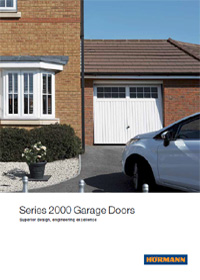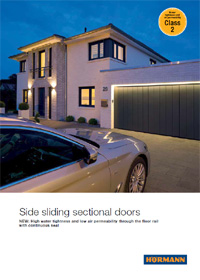Quality, Reliability & Great Value
Garage Doors Cambridge, Cambridgeshire | Garage Door Repair Cambridge, Cambridgeshire | Roller Shutter Garage Doors Cambridge, Cambridgeshire
ACE Garage Doors are currently carrying out some work in the Cambridge area and we are looking forward to adding these residents of Cambridge to our list of very satisfied customers. So often we think about having improvements carried out in and around our homes but sadly, the garage door is frequently the job that is left until last or forgotten altogether. ACE Garage Doors have a fantastic range of garage doors for you to choose from and our prices are very reasonable too. We think you will be surprised at just how affordable a new garage door could be. So if you require a new garage door, or just need an existing one services or repaired, why not give us a call today, we know you won't regret it!
Some Cambridge history
Settlements have existed around the Cambridge area since prehistoric times. The earliest clear evidence of occupation is the remains of a 3,500-year-old farmstead discovered at the site of Fitzwilliam College. Archaeological evidence of occupation through the Iron Age is a settlement on Castle Hill from the 1st century BC, perhaps relating to wider cultural changes occurring in south eastern Britain linked to the arrival of the Belgae.
The Roman period in Cambridge
The main Roman site is a small fort Duroliponte on Castle Hill, just North West of the city centre around the location of the earlier British village. The fort was bounded on two sides by the lines formed by the present Mount Pleasant, continuing across Huntingdon Road into Clare Street. The eastern side followed Magrath Avenue, with the southern side running near to Chesterton Lane and Kettle's Yard before turning northwest at Honey Hill. It was constructed around AD 70 and converted to civilian use around half a century later. Evidence of more widespread Roman settlement has been discovered, including many farmsteads and a village in the Cambridge district of Newnham.
The Medieval period in Cambridge
Following the Roman withdrawal from Britain at about 410, the Cambridge area may have been abandoned by the Britons, although the site is usually identified as Cair Grauth, as listed among the twenty eight cities of Britain in the History of the Britons attributed to Nennius. Evidence exists that the invading Anglo-Saxons had begun occupying the area by the end of the century. Their settlement, which was also on and around Castle Hill became known as Grantebrycge. By Middle English, the settlement's name had changed to "Cambridg koe", deriving from the word 'Camboricum', meaning 'passage' or 'ford' of stream in a town or settlement, and the lower stretches of the Granta changed their name to match. Anglo-Saxon grave goods have been found in the area. During this period, Cambridge benefited from good trade links across the hard-to-travel fenlands. By the 7th century, Cambridge was less significant and described by Bede as a "little ruined city" containing the burial site of Etheldreda. Cambridge sat on the border between the East and Middle Anglian kingdoms, and the settlement slowly expanded on both sides of the river.
The Anglo-Saxon Chronicle reports that the Vikings arrived in 875; they imposed Viking rule, the Danelaw, by 878. Their vigorous trading habits resulted in rapid growth of Cambridge. During this period, the Cambridge town centre shifted from Castle Hill on the left bank of the river to the area now known as the Quayside on the right bank. After the Viking period, the Saxons enjoyed a return to power, building churches, such as St Benet's Church, as well as wharves, merchant houses, and a mint which produced coins with the town's name abbreviated to "Grant".
In 1068, two years after the Norman Conquest of England, William the Conqueror erected a castle on Castle Hill, the motte of which survives. Like the rest of the newly conquered kingdom, Cambridge fell under the control of the King and his deputies.
Cambridge's first town charter was granted by Henry I between 1120 and 1131. It granted Cambridge a monopoly of waterborne traffic and hithe tolls and recognised the borough court. The distinctive Round Church dates from this period. In 1209, Cambridge University was founded by Oxford students fleeing from hostility. The oldest existing college in Cambridge, Peterhouse, was founded in 1284.
Cambridge had a significant Jewish community during the middle ages, centred on what is now known as All Saints Passage, and then known as the Jewry. A synagogue stood nearby. In January 1275, Eleanor of Provence expelled Jews from all of the towns within her dower lands, and the Jews of Cambridge were ordered to relocate to Norwich.
The plague comes to Cambridge
In 1349, Cambridge was affected by the Black Death. Few records survive but sixteen out of forty scholars at King's Hall died from the dreaded illness. The town north of the river was severely impacted, being almost wiped out. Following further depopulation after a second national epidemic in 1361, a letter from the Bishop of Ely suggested that two parishes in Cambridge be merged as there were not enough people to fill even one church. With more than a third of English clergy dying in the Black Death, four new colleges were established at the university over the following years to train new clergymen, namely Gonville Hall, Trinity Hall, Corpus Christi, and Clare.
Early modern period in Cambridge
Following many repeated outbreaks of pestilence throughout the 16th century, sanitation and fresh water were brought to Cambridge by the construction of Hobson's Conduit in the early 1600s. Water was brought from Nine Wells, at the foot of the Gog Magog Hills to the southeast of Cambridge, into the centre of the town.
Cambridge played a vital and significant role in the early part of the English Civil War as it was the headquarters of the Eastern Counties Association, an organisation administering a regional East Anglian army, which became the mainstay of the Parliamentarian military effort before the formation of the New Model Army. In 1643 control of Cambridge was given by Parliament to Oliver Cromwell, who had been educated at Sidney Sussex College in Cambridge. Cambridge castle was fortified and garrisoned with troops and some bridges were destroyed to aid its defence. Although Royalist forces came within 2 miles of the town in 1644, the defences were never used, and the garrison was stood down the following year.
The industrial era in Cambridge
In the 19th century, in common with many other English towns, Cambridge expanded rapidly, due in part to increased life expectancy and improved agricultural production leading to increased trade in town markets.
The railway came to Cambridge in 1845 after initial resistance, with the opening of the Great Eastern Railway's London to Norwich line. The station was outside the town centre following pressure from the university to restrict travel by undergraduates. With the arrival of the railway and associated employment came development of areas around the station, such as Romsey Town. The rail link to London stimulated heavier industries, such as the production of brick, cement and malt.
Cambridge plays its part in the War effort
During World War II, Cambridge was an important centre for defence of the east coast. The town became a military centre, with an RAF training centre and the regional headquarters for Norfolk, Suffolk, Essex, Cambridgeshire, Huntingdonshire, Hertfordshire, and Bedfordshire established during the conflict. The town itself escaped relatively lightly from German bombing raids, which were mainly targeted at the railway. Twenty nine people were killed and no historic buildings were damaged. In 1944, a secret meeting of military leaders held in Trinity College laid the foundation for the allied invasion of Europe. During the war Cambridge served as an evacuation centre for over 7,000 people from London, as well as for parts of the University of London.
So, if you live in or around the Cambridge area and require servicing or repair to your garage door, give us a call. Should you want a new garage door, or wish to upgrade to an electronically controlled garage door, we can discuss your exact requirements and ensure you make the right informed decision.
We also cover the following areas in Cambridgeshire:
ACE Garage Doors
For 29 years Ace has been supplying, fitting, servicing and repairing Garage Doors, with thousands of satisfied customers in Hertfordshire and all over the South East. Providing truly excellent customer service means everything to us at ACE Garage Doors, so we put our customers needs at the heart of our business and strive to provide a friendly, prompt and speedy service without compromising on quality or value.
If you are looking for high quality Garage Doors and service you can trust then contact ACE Garage Doors for a QUICK QUOTE today.

Why choose ACE Garage Doors?
- Established 29 years
- Fast and friendly service
- 10 year door guarantee
- 5 year motor guarantee
- No deposit required
- Established brands
- Award winning service

Speed
We aim to respond to enquiries the same day, and provide a rapid quote. If a FREE site survey is required we aim to get to you within 48 hours. We also have a 24/7 repairs service where one of our skilled team will attend to secure your property, or rescue your car!
Customer service
Customer satisfaction is at the forefront of everything we do. We recognise that people lead busy lives, and so we aim to be responsive to enquiries, provide realistic lead-times and do not take any payment until the job is finished and our customers are 100% satisfied.
Quality
Our team has 36 years in the industry and only work with established brands we can set our reputation against, plus
we have no sales people or middle men you will be dealing direct with the owners of the company, Darren and Simon.
Read our story here.
Expertise
ACE Garage Doors offer a full fitting and repair service carried out by our professionally qualified team. From the replacement of individual parts through to a full renovation of your garage, ACE Garage Doors are experts in our field with many years of experience to draw on.
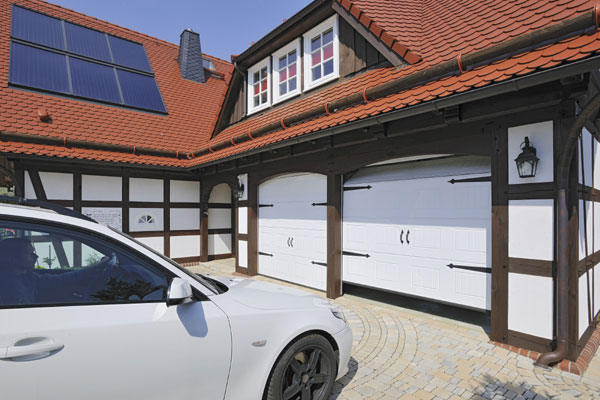
Garage door services
- Extensive range of doors
- All doors fitted by experts
- FREE quotes
- Automated operation
- Full servicing and repairs
- 24/7 call out available

Garage door types
- Electric roller shutters
- Sectional garage doors
- Remote controlled doors
- Insulated garage doors
- Canopy / up & over doors
- Side hinged garage doors

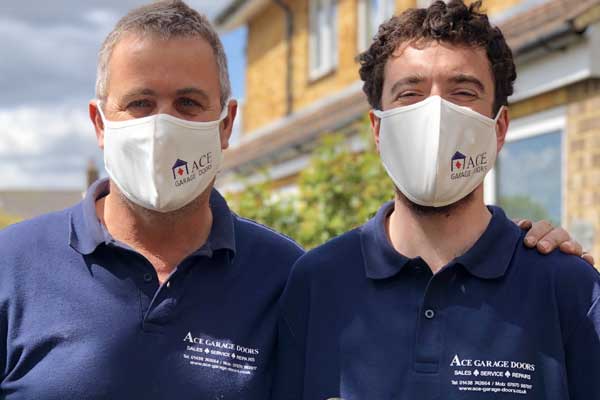
Professional team
- Proud of our reputation
- Fully qualified team
- Over 30 years' experience
- Regularly recommended
- Covid safe services
- Support local football clubs

Areas covered
- Hertfordshire
- Bedfordshire
- Buckinghamshire
- Cambridgeshire
- Essex
- North London
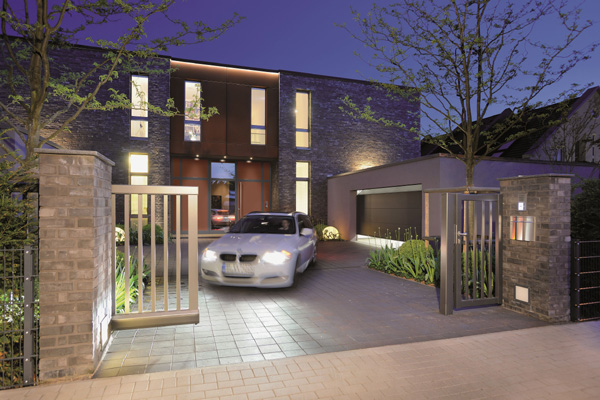
Pricing
We offer extremely competitive pricing by keeping our overheads low, buying in bulk and then passing the savings onto our customers. We have a reputation for providing great value and as a result, we frequently get referred to our customers' families, friends and neighbours.
Industry leading warranties
We offer 10 year warranties for all our up and over and roller doors and frames, and an industry leading 5 year warranties on all our tubular motors, such is our confidence in the quality of our work and components. We also offer 2 year warranties on parts and labour for garage door repairs.
Eco-friendly
As a company we are extremely environmentally aware, and all waste materials, from your old door to the packaging materials for the new product are taken for recycling at our own cost. So by choosing ACE Garage Doors you can be reassured that you are also playing your part to protect the environment.
Easy to follow ordering process
During the FREE SURVEY precise measurements will be taken and your needs matched against a wide range of products from leading manufacturers with whom we deal direct. We will discuss the various materials and finishes available, as well as any optional extra features you might have requested such as glazing and automation.
We can provide doors in almost any colour you can imagine, so provide us with a specific RAL colour or ask us about our colour matching service and we will find it for you! We will inform you of the price fully inclusive of VAT, and if an insurance claim is being made we are happy to provide a written quotation. We don't charge you to take your door away, and it will be recycled for you. Simple.
Selection of garage doors available from ACE Garage Doors
Garage doors supplied, fitted, serviced and repaired in St Albans
St Albans is a wonderfully historic town in Hertfordshire. St Albans is the home of Hertfordshires legal profession. St Albans also has a beautiful Cathedral and Abbey Curch.
St Albans has many beautiful properties that would benefit from a top quality new garage door from ACE Garage Doors. We can provide and fit single garage doors, double garage doors, roller and shutter garage doors, both manual and electrically operated.
Should you be fortunate enough to live in or around the beautiful town of St Albans, why not call ACE Garage Doors for a free no obligation quote and allow us to prove to you why our service is second to none and why our reputation is envied by our competitors. Our engineers carry a full range of electric motors, springs and spares to fit all of our doors.
Get a QUICK QUOTE or request more information
If you would like a QUICK QUOTE then please contact us on 01438 742 664 or email us at info@ace-garage-doors.co.uk and we will be in touch shortly.
Further information:
- Sectional Garage Doors in Herts, Beds, Bucks, Essex and North London
- ace-garage-doors.co.uk
- Roller Shutter Garage Doors in Stevenage, Hertfordshire
- Garage Doors in Luton, Bedfordshire
- Garage Doors in Broxbourne, Hertfordshire
- Garage Doors in Epping, Essex
- Garage Door repair in Barnet, London
- Garage Door repair in Biggleswade, Bedfordshire
- Garage Doors in Harpenden, Hertfordshire
- Garage Doors in Hertford, Hertfordshire
- Garage Doors in Hitchin, Hertfordshire
- Garage Doors in Hoddesdon, Hertfordshire
- Hormann Garage Doors in Stevenage, Hertfordshire
- Hormann Sectional Garage Doors in Stevenage, Hertfordshire
- Hormann Sectional Garage Door repair in Stevenage, Hertfordshire
- Hormann Sectional Garage Doors in Stevenage, Hertfordshire
- Garage Doors in Letchworth, Hertfordshire
- Garage Doors in Potters Bar, Hertfordshire
- Garage Doors in Royston, Hertfordshire
- Garage Doors in Welwyn Garden City, Hertfordshire
Hertfordshire
Bedfordshire
Buckinghamshire
Cambridgeshire
Essex
North London
Areas covered :: Articles :: Privacy policy :: Vacancies :: Website map














